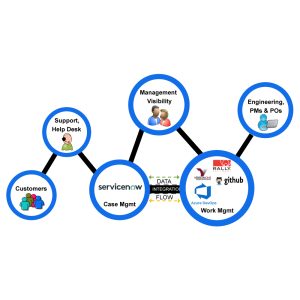Generative AI: A Revolutionary Technology
The field of artificial intelligence (AI) has witnessed remarkable advancements in recent years, and generative AI stands out as a revolutionary technology with the potential to transform various industries and aspects of our lives. Unlike traditional AI approaches that focus on analyzing and interpreting existing data, generative AI possesses the unique ability to create new and original content, from images and music to text and code. This capability has opened up a plethora of possibilities and fueled the rapid adoption of generative AI across various domains.
The Driving Forces Behind Generative AI’s Rise
Several factors have contributed to the surge in interest and adoption of generative AI. One of the key drivers is the rapid progress in deep learning algorithms, which provide the foundation for generative AI models. These algorithms have become increasingly sophisticated, enabling them to capture complex patterns and generate outputs that are remarkably similar to human-created content.
Another significant factor driving the rise of generative AI is the increasing availability of data. The vast amount of data now available, encompassing text, images, audio, and video, provides the necessary fuel for training generative AI models to produce high-quality results. This abundance of data has accelerated the development of Generative Adversarial Networks (GANs), a powerful class of generative AI models that have revolutionized the field.
Researchers are at the forefront of generative AI research, developing new algorithms and techniques that are pushing the boundaries of what is possible. For example, researchers have developed a new class of generative AI models called “neural style transfer” that can transfer the style of one image to another. This technology has been used to create stunning works of art and to develop new applications in image processing and computer vision.
Use Cases
Using generative AI to solve real-world problems in a variety of industries. For example
- Fraud detection and prevention: AI is used to detect and prevent fraudulent activity by analyzing large amounts of data to identify patterns and anomalies.
- Risk management: AI is used to assess and manage financial risk by simulating different scenarios and predicting potential outcomes. This includes assessing creditworthiness, evaluating investment risks, and managing market risks.
- Citizen engagement and communication: AI is used to improve communication and engagement with citizens by generating personalized messages, translating documents into multiple languages, and creating customized customer service experiences.
- Mineral exploration and discovery: AI is used to analyze geological data and identify potential mineral deposits. This helps mining companies target their exploration efforts more effectively and reduce the risk of drilling dry holes.
- Mine planning and optimization: AI is used to optimize mine plans by simulating different mining scenarios and predicting their potential outcomes. This helps mining companies maximize resource recovery and minimize environmental impact.
- Personalized product recommendations: AI is used to generate personalized product recommendations for customers based on their past purchases, browsing history, and demographic data. This can help retailers increase sales and improve customer satisfaction.
- Inventory management and optimization: AI is used to optimize inventory levels by predicting demand and identifying potential stockouts.



